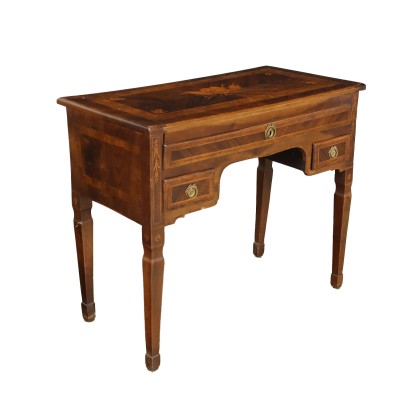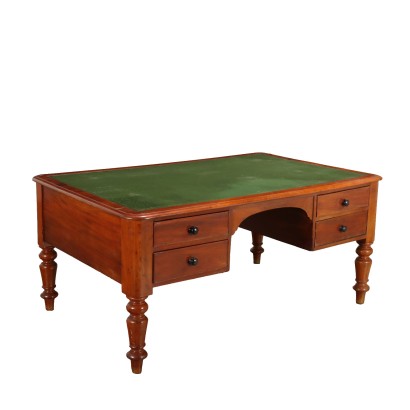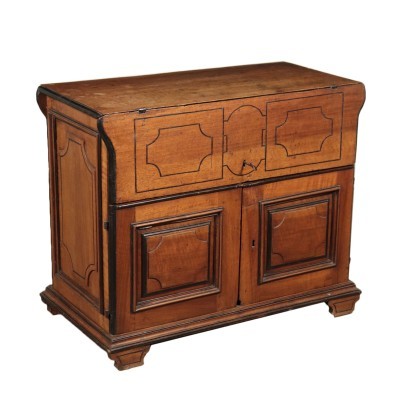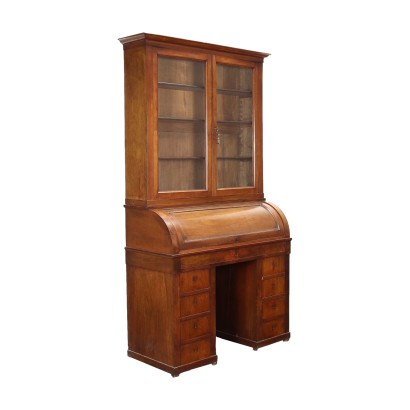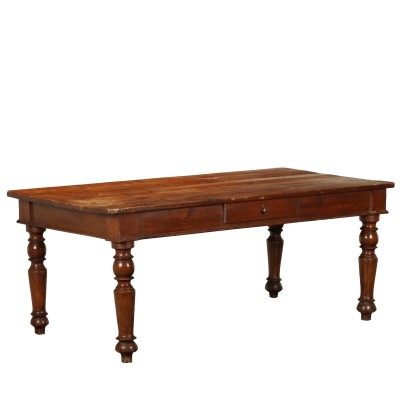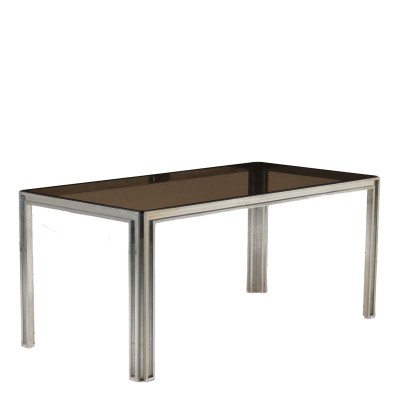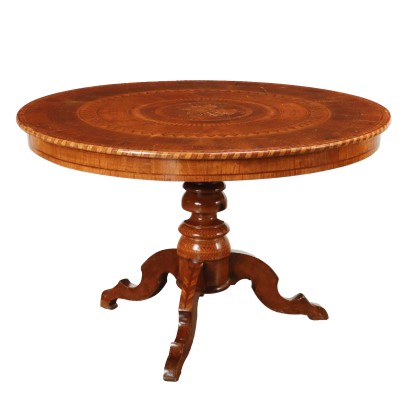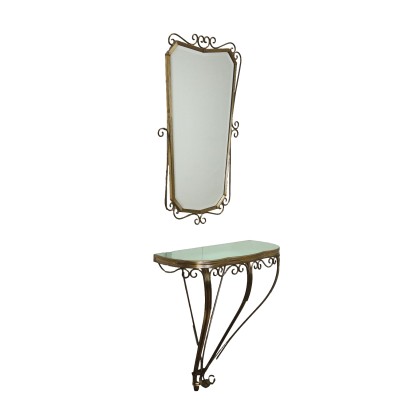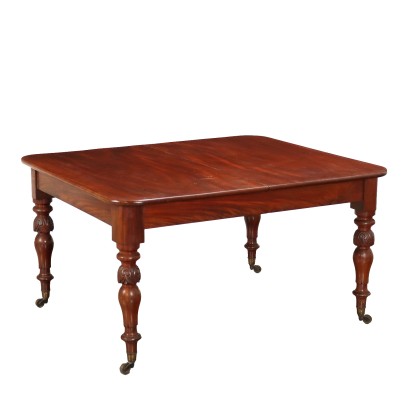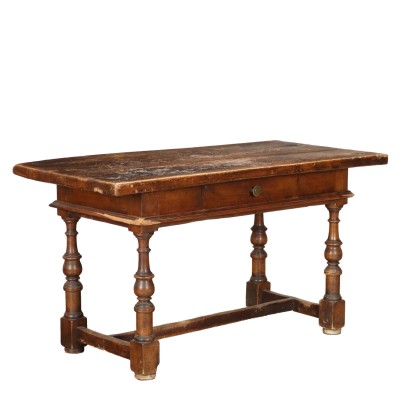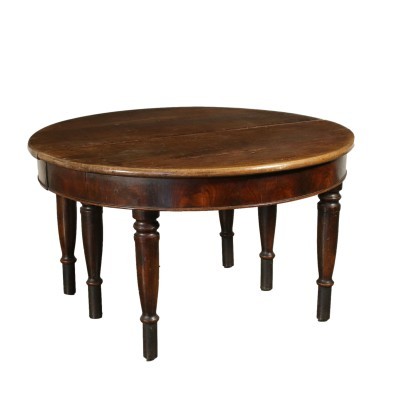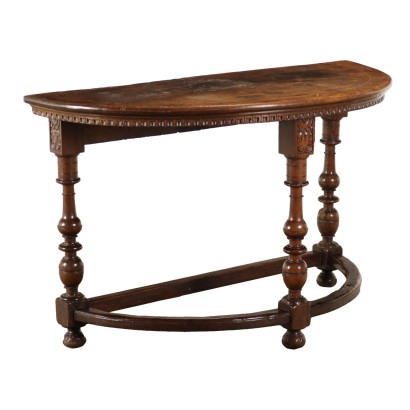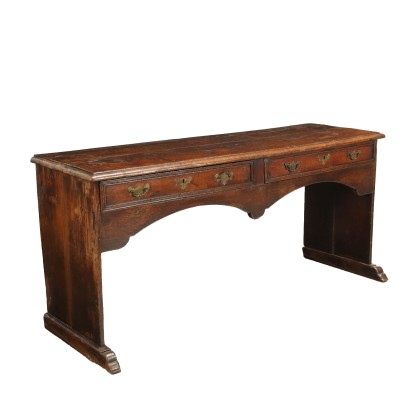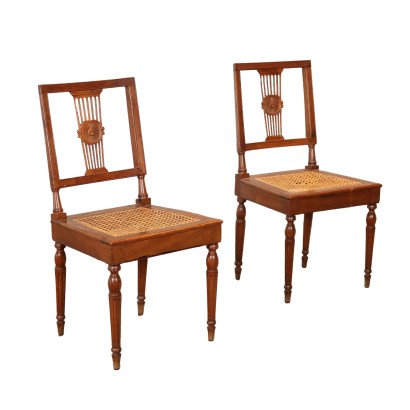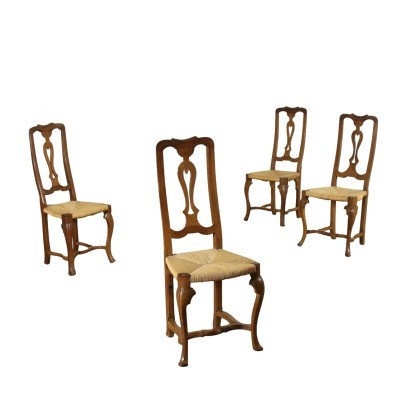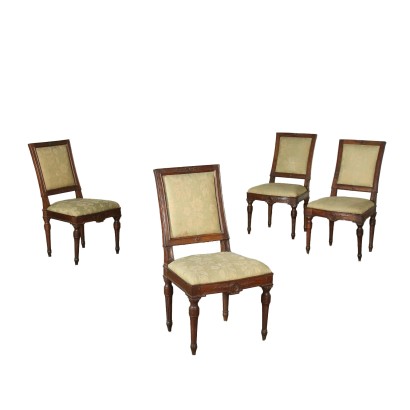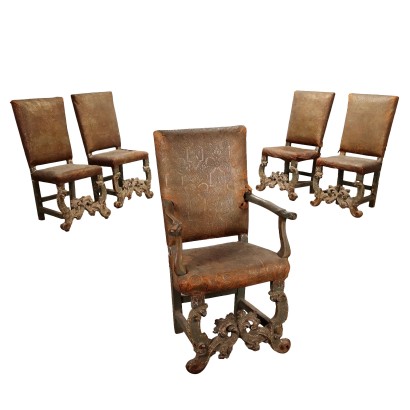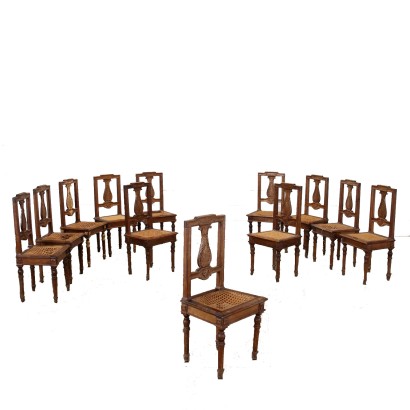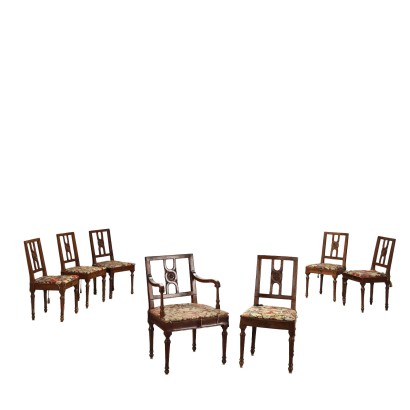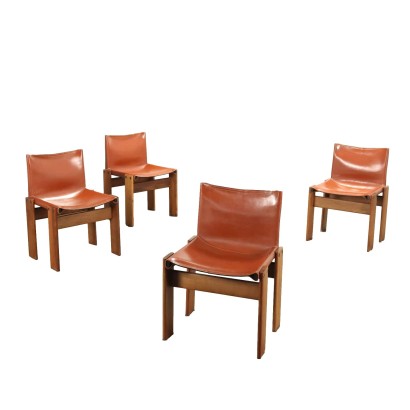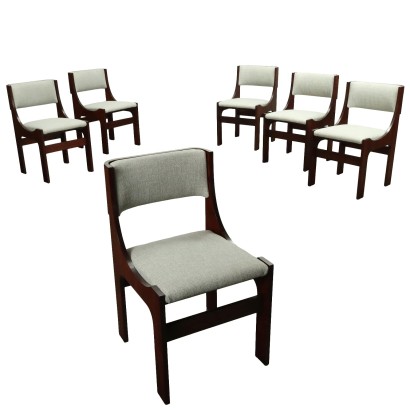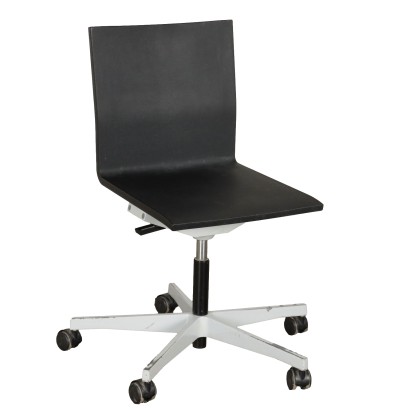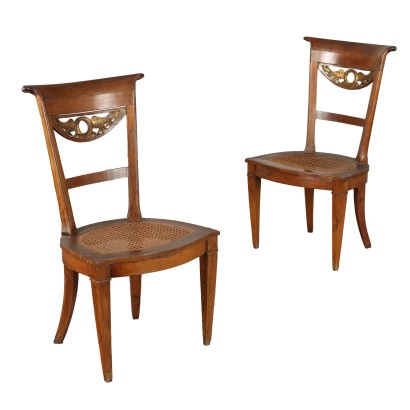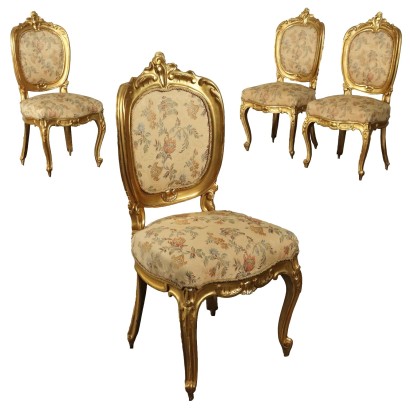Neoclassical Desk Walnut Italy XVIII Century - Lombardy Last Fourth XVIII Century
Features
Lombardy Last Fourth XVIII Century
Style: Neo-Classical (1765-1790)
Age: 18th Century / 1701 - 1800
Origin: Lombardia, Italy
Main essence: Maple , Brazilian Rosewood , Boxwood , Walnut , Olive
Material: Walnut
Description
Lombard neoclassical open desk in walnut, obtained by modifying a dressing table by creating the upper front drawer, Italy last quarter of the 18th century. Threaded in maple and with edges in olive, bois de rose and maple, veneered top in walnut pedule in the large central reserve hosting boxwood panoply, wood also used for the leafy tufts positioned in the corners. A drawer in the band and two on the sides, side reserves, bell-shaped inlays and rosettes on the uprights, truncated pyramidal legs. Walnut interior.
Product Condition:
Product that due to age and wear requires restoration and resumption of polishing.
Dimensions (cm):
Height: 76,5
Width: 92,5
Depth: 46,5
Additional Information
Style: Neo-Classical (1765-1790)
This historical period includes a first phase that can be properly defined as the Louis XVI style.nOnly at a later time, with the maturation of archaeological fashions, was a new vision of furnishing civilization formulated and codified, now fully attributable to the Neoclassical Style.
In fact, both trends coexisted in unison until the last years of the eighteenth century.
nIn the field of cabinet making, the Directoire, Retour d'Egypte, Consular and Empire styles also fall within the neoclassical era.
nFind out more about Neoclassicism with the insights from our blog...
n



